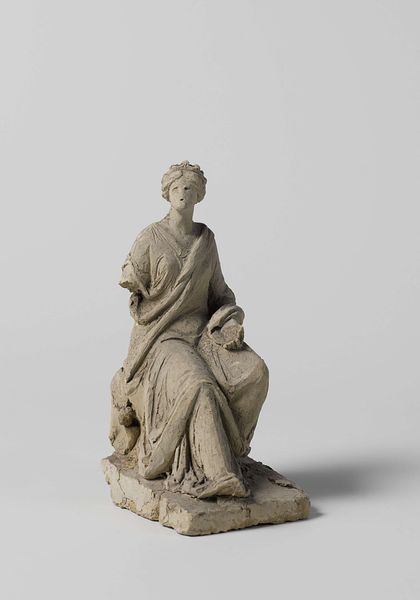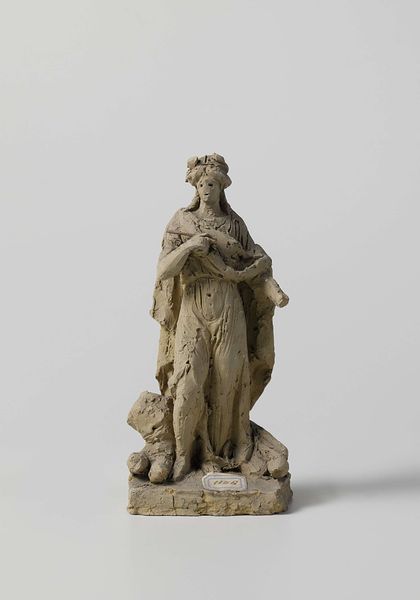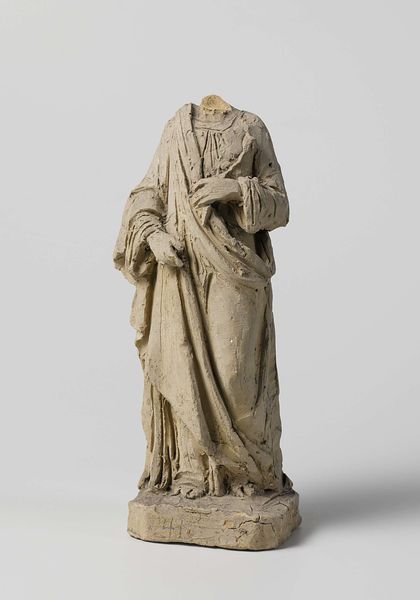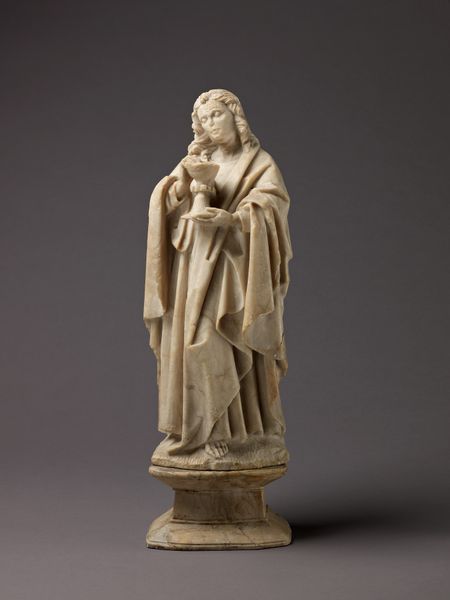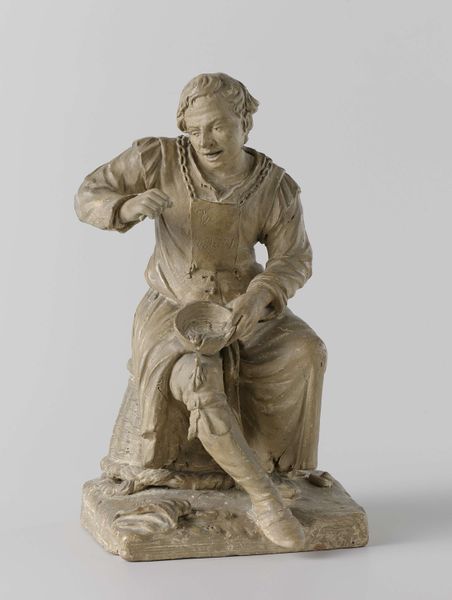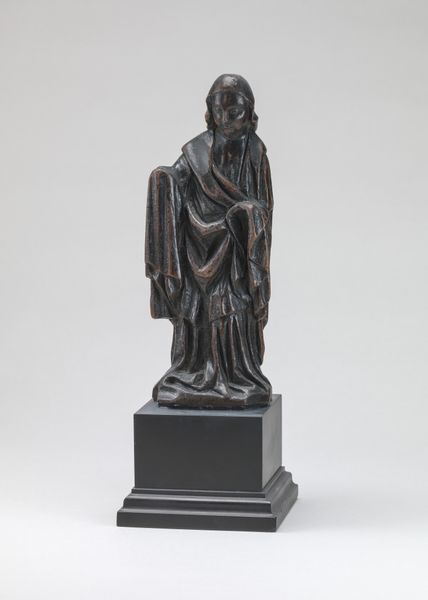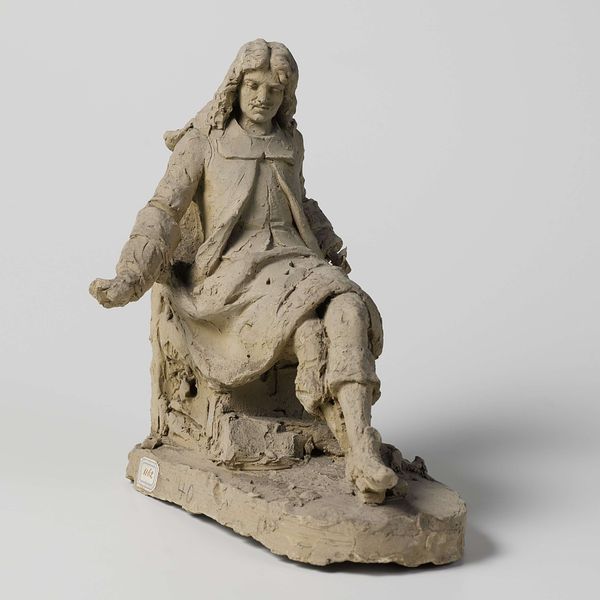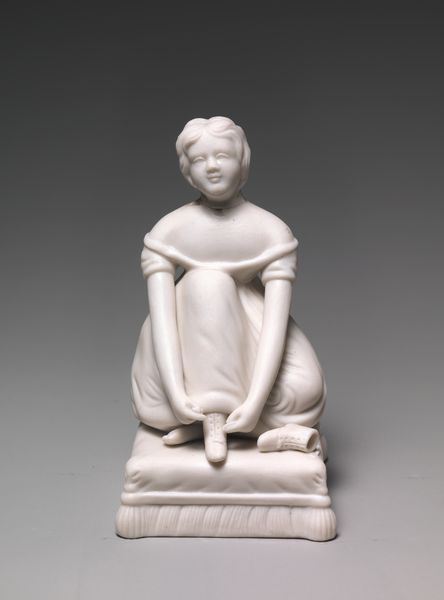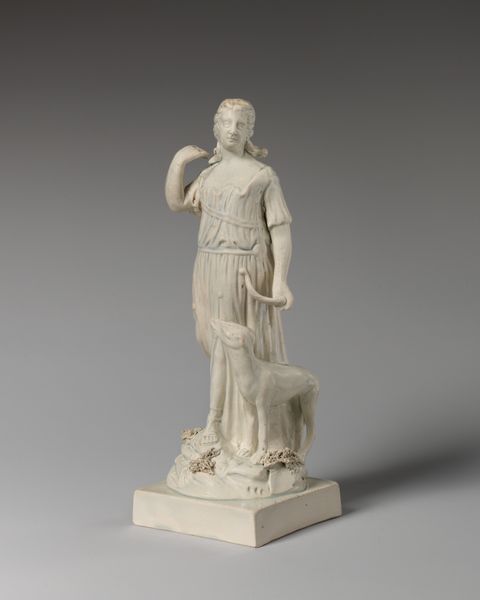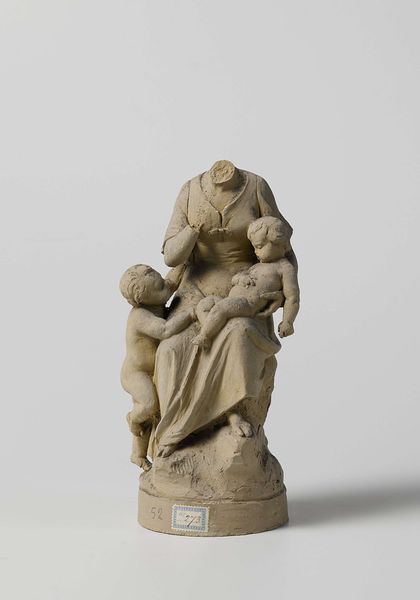
sculpture, marble
#
portrait
#
sculpture
#
classical-realism
#
sculpture
#
marble
Dimensions: height 17.5 cm, width 9 cm, depth 9 cm
Copyright: Rijks Museum: Open Domain
Curator: What strikes you first about this sculpture? It's a piece known as "Knielende vrouwenfiguur met krans," or "Kneeling Female Figure with Wreath" created sometime between 1800 and 1950, attributed to Eugène Lacomblé. Editor: Melancholy, definitely a profound sense of melancholy. The way her head is bowed, and the missing arm—it speaks to a narrative of loss. I can’t help but consider the patriarchal structures which constrain women, even in sculptural form, dating back to this period. Curator: Indeed. The classical realism style certainly evokes traditional notions of beauty and idealized femininity, but let’s consider the context of its creation. We see here an exploration of the public role of women in art as dictated by social mores. Her kneeling position could symbolize supplication, or devotion, in what was very much an age of revolutions. How do these power dynamics play out, do you think? Editor: Absolutely, that’s insightful. It invites us to question whether her posture reflects genuine piety, or societal expectations imposed upon women to be docile and submissive. The wreath—a common symbol—typically represents victory or honor, but here, its presence seems laden with irony. Is she offering it, or being adorned, perhaps against her will? The composition invites these feminist critiques. Curator: And don’t forget the material. This piece is crafted from marble. Its texture provides permanence. Lacomblé’s utilization of marble within the canon reminds me of the ways sociopolitical statements gain permanence as the decades pass. The very act of preserving the female form in stone makes a powerful statement. Editor: I agree. Her enduring presence as a marble statue sparks considerations on gender roles, politics of the day, race and so on. What do we expect of women even now? I think it makes us question and interrogate our perspectives in a really fascinating way. Curator: The politics of imagery remain as vital now as then, don't you agree? A humbling piece overall. Editor: Absolutely. A beautiful and troubling work to unpack.
Comments
No comments
Be the first to comment and join the conversation on the ultimate creative platform.
